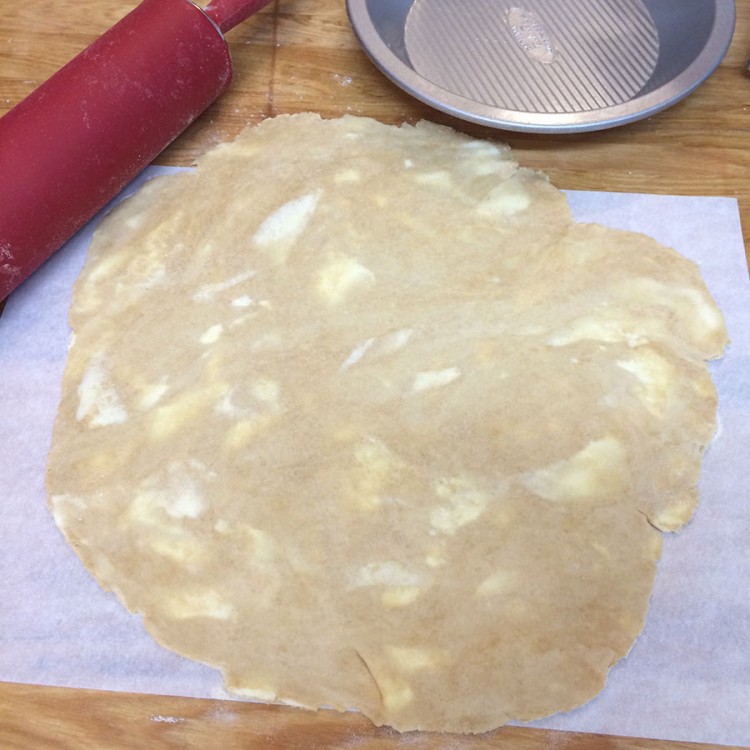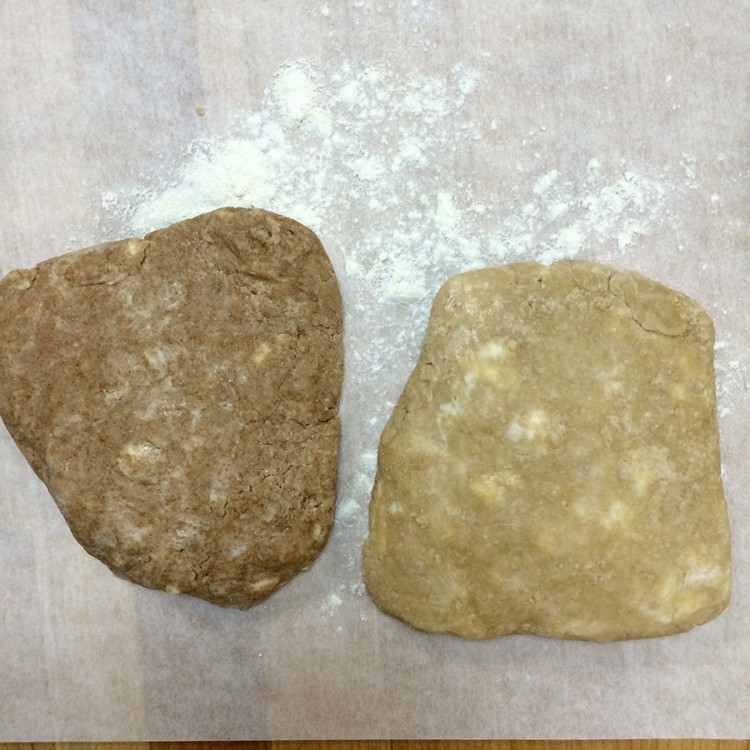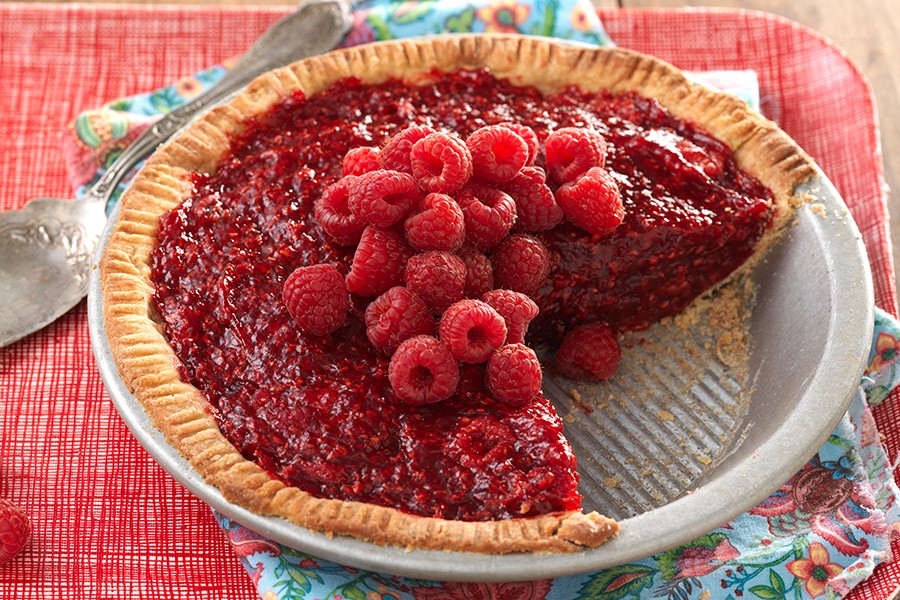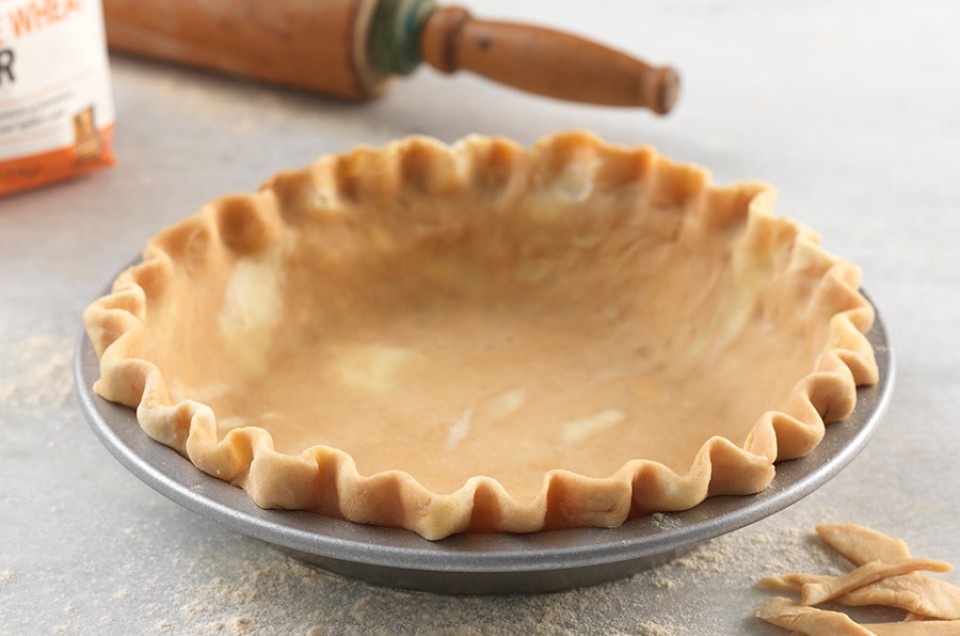


Flaky, buttery, crispy… whole wheat pie crust?
Doesn’t seem like that’s how to describe a pie crust made with whole wheat, does it? Well folks, put this on your “must bake" list. This crust, made with white whole wheat flour, looks and acts just like its all-purpose cousin – but comes with all of the nutritional benefits that whole wheat brings.
Making a pie crust can be a daunting feat for many. It’s the sort of thing that you need to make a few times before it becomes second nature.
I learned to make the perfect pie from the ever-knowledgeable Susan Reid, editor of our new magazine, Sift. She's pretty masterful, so if you're starting at square one, it's well worth reading her pie crust blog. And re-reading it, and printing it to tape on the countertop. Maybe turn it into wallpaper?
Maybe you’re perfectly comfortable making pie, but the thought of introducing whole wheat into the equation is giving you pause. It certainly did me the first time I attempted it. Just breathe, remember that you're a super-awesome baker who can do anything, and give it a shot!
Traditional whole wheat flour (as opposed to white wheat flour) is going to give you a significantly darker crust; you’ll also to able to taste it. For those who enjoy the taste of whole wheat, this is a benefit. But for those who are trying to add nutrition without anyone being the wiser, white whole wheat is your flour of choice.
Same nutritional benefits – totally different taste. How is that possible?
It’s simple. White whole wheat flour is ground from white wheat berries, rather than from red wheat berries, the kind that become traditional whole wheat flour. Both are 100% whole-grain; but the white wheat berries yield flour with a milder taste and lighter color.
Here are a few things to remember when creating a whole-wheat pie crust:
Your dough will soften up and roll out smoother after the wheat has had a chance to rest. Without that rest, it may tend to crack and split.
I attempted to roll a round of whole-wheat dough immediately after mixing, and it cracked and crumbled. It truly does need at least a 30-minute rest before any rolling and shaping. Once it had a chance to rest, the crust rolled out and crimped up like a dream.
But that doesn’t necessarily mean you need to add more water to your dough. Treat whole wheat flour the same as all-purpose; it will let you know when it’s had enough. Grab a handful and give it a squeeze. If it sticks together, you’re good.
You can easily add more water; but it's far harder to adjust dough consistency when there's too much water. If you try to compensate by working in more flour, the result is often a tough, dry crust.
This trick works well, whether you're using white whole wheat or traditional whole wheat. OJ tends to temper the wheat’s assertive taste, without adding any orange flavor of its own.
As with making any pie dough, it's best to keep handling time to a minimum. Hot hands = melted butter = less flaky. Using a pastry blender will keep the friction down, which will keep your butter cold.
Could you make whole wheat pie crust with all butter? Yes, though your fancy fluted edges might not turn out so well. Shortening gives the pie structure. Butter gives it great flavor. And both fats add to the crust's flakiness. I think the combination of the two will give you the ideal whole-wheat crust with proper edges.
My fellow blogger PJ Hamel wrote up a fabulous blog comparing the two fats. It explains in far greater detail what using each will produce.
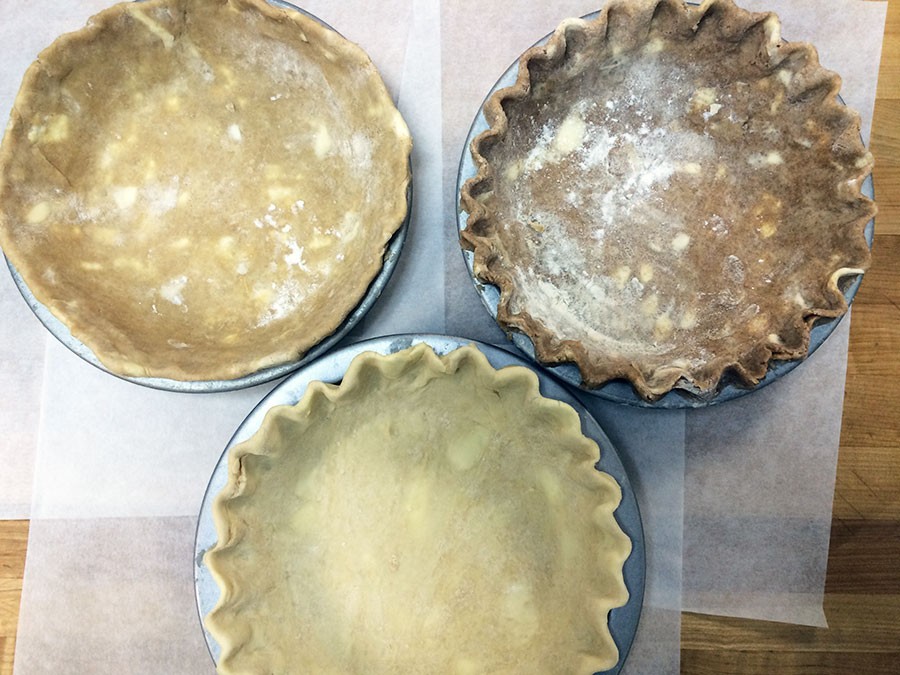
I did a little experimenting to see how the process of making an all-purpose, white whole wheat, and whole wheat pie crust compared. Honestly? There isn’t much difference. However, the rest period is more crucial with the whole wheat than the all-purpose.
Concerned that your picky eaters won’t touch a whole-wheat pie, even when stuffed full of sweet fruit? You can see that there's a huge difference in the appearance of the traditional whole wheat crust versus the one made with all-purpose flour. So maybe that’s not a good start. White whole wheat has a lighter appearance, as well as mellower taste.
Can you make a pie that's half all-purpose and half whole wheat? Absolutely. Just follow the basic guidelines, adding water a little at a time. The result should be that flaky yet tender crust you're after.
Creating a whole wheat pie crust is well worth the effort. How else could you justify filling it with chocolate cream and enjoying an extra big slice?! Though personally, I think a Fresh Raspberry Pie should be the first thing on the menu!
Please bake, rate, and review our recipe for Whole Wheat Pie Crust.


